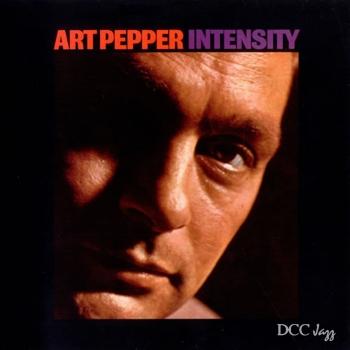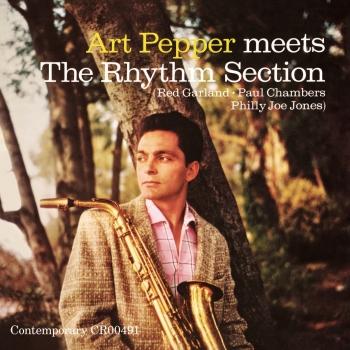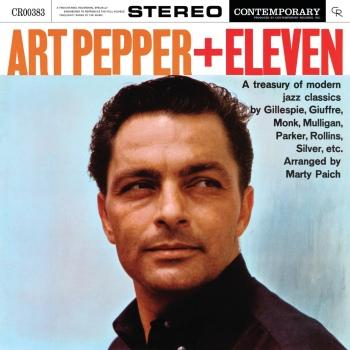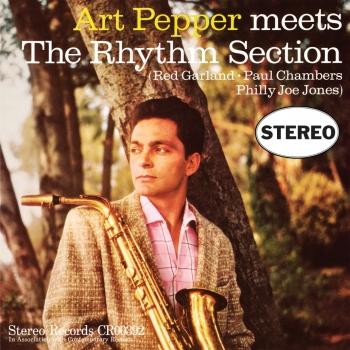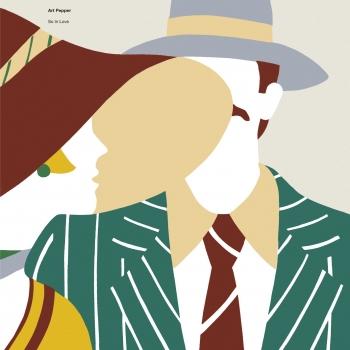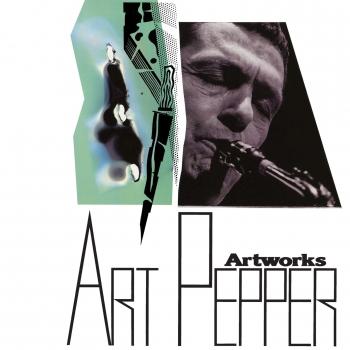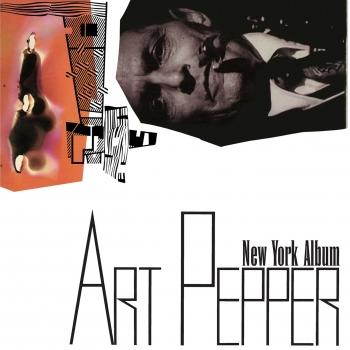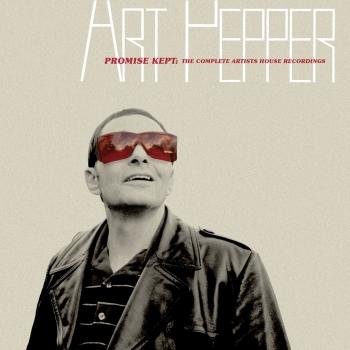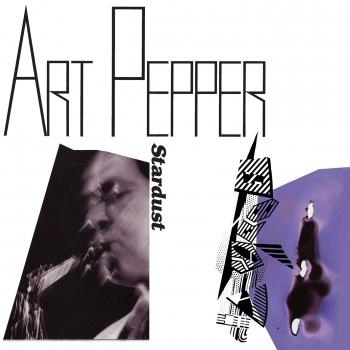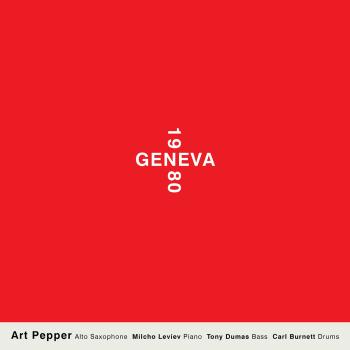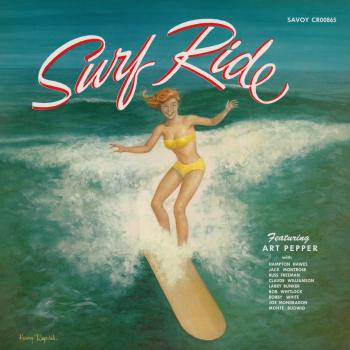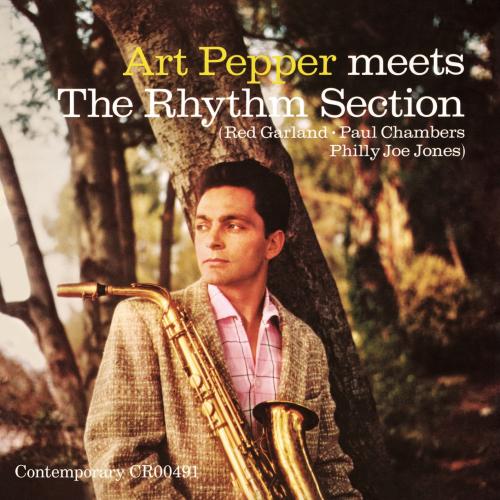
Art Pepper Meets The Rhythm Section (Mono Remastered) Art Pepper
Album Info
Album Veröffentlichung:
1957
HRA-Veröffentlichung:
29.04.2022
Das Album enthält Albumcover
Entschuldigen Sie bitte!
Sehr geehrter HIGHRESAUDIO Besucher,
leider kann das Album zurzeit aufgrund von Länder- und Lizenzbeschränkungen nicht gekauft werden oder uns liegt der offizielle Veröffentlichungstermin für Ihr Land noch nicht vor. Wir aktualisieren unsere Veröffentlichungstermine ein- bis zweimal die Woche. Bitte schauen Sie ab und zu mal wieder rein.
Wir empfehlen Ihnen das Album auf Ihre Merkliste zu setzen.
Wir bedanken uns für Ihr Verständnis und Ihre Geduld.
Ihr, HIGHRESAUDIO
- 1 You'd Be So Nice To Come Home To (Mono) 05:27
- 2 Red Pepper Blues (Mono) 03:40
- 3 Imagination (Mono) 05:56
- 4 Waltz Me Blues (Mono) 02:55
- 5 Straight Life (Mono) 04:02
- 6 Jazz Me Blues (Mono) 04:44
- 7 Tin Tin Deo (Mono) 07:42
- 8 Star Eyes (Mono) 05:16
- 9 Birks' Works (Mono) 04:19
Info zu Art Pepper Meets The Rhythm Section (Mono Remastered)
Für Art Pepper Meets the Rhythm Section tat sich Jazz-Saxophonist Art Pepper 1957 mit der Rhythmussektion des Miles Davis Quintet zusammen. Das Zustandekommen der Aufnahme ist legendär und vielerorts beschrieben: Am Morgen des 19. Januar informierte Peppers Frau Diane den Musiker, dass sie für den Nachmittag eine Aufnahmesession mit der Rhythm Section, die für einen Auftritt mit Davis in Los Angeles war, vereinbart hatte. Peppers Saxophon war in schlechtem Zustand und musste eigentlich repariert werden, entsprechend unangenehm war die Überraschung. Pepper löste das Problem mit einer üppigen Dosis Heroin und ging zur Aufnahme. Es entstand ein legendäres Album.
Red Garland, Paul Chambers, Philly Joe Jones schlugen für die Aufnahme Titel wie Cole Porters You'd Be So Nice To Come Home To, Garlands Red Pepper Blues und die Ballade Imagination vor. Ergänzt wurden diese Titel zum Beispiel durch das lateinamerikanisch swingende Tin Tin Deo oder den New-Orleans-Klassiker Jazz Me Blues. Ein einzigartiges Zusammentreffen, auf Band gebannt und auch heute eine Empfehlung für jede Jazz-Sammlung.
Art Pepper, Altsaxophon
Red Garland, Klavier
Paul Chambers, Kontrabass
Philly Joe Jones, Schlagzeug
Digitally remastered
Art Pepper
born in Gardena, California on September 1, 1925 and raised in nearby San Pedro, began playing clarinet at age 9 and, by 15, was performing in Lee Young’s band at the Club Alabam on Central Avenue, the home of jazz in prewar Los Angeles.
He joined Stan Kenton’s band, touring the U.S. and gaining fame, but was drafted in 1943 serving as an MP in London and performing with some British jazz bands. He returned to the States and to Kenton, touring and recording. In 1952 he placed second only to Charlie Parker in the Down Beat jazz poll. Probably his most famous recording from that period is his stunning performance of “Art Pepper,” written by Shorty Rogers (as part of a series of charts Kenton had commissioned to feature members of his band).
Art left Stan Kenton in 1951 to form his own group, occasionally recording for Rogers and others. He signed with Contemporary Records in 1957.
From the beginning Art’s playing combined a tender delicacy of tone with a purity of narrative line—a gift for storytelling that was made irresistible by an inherent, dancing, shouting, moaning inability to ever stop swinging.
He was one of the few alto players to resist the style and tone of Charlie Parker. What he failed to resist was the lure of drugs, ubiquitous, at that time, among jazz musicians. And although some users managed to get through and over their addictions, Art, survivor of a rocky childhood (alcoholic neglectful mother, alcoholic violent father), unbalanced from the get-go, never did quite triumph over his, though he may have fought them to a draw.
So, in 1952, he began a long series of hospitalizations and incarcerations for violations of the drug laws of his time—possession, internal possession (“marks”), and then for violations of his previous releases (more possessions and internal possessions). In time, he became a petty thief, a real thief, a robber (though not an armed robber; his fellow criminals thought he was too crazy to be trusted with a gun). He served time for the Feds (Terminal Island) and for the State of California (San Quentin). He prided himself on being “a stand-up guy,” a good criminal.
All this history makes a pretty gripping story as it’s told by Art with his wife Laurie Pepper in their book, Straight Life (DaCapo). What’s surprising is that the music he managed to make during irregular bursts of freedom was enthralling, too. The gift was starved for the spotlight, for opportunities for performing and recording, but it flowered in the dark, became deeper and more soulful. The performances—from The Art Pepper Quartet (1952) and Art Pepper Meets the Rhythm Section (with Miles Davis’s rhythm section) on Contemporary (1957) all the way through the recordings he made at the Village Vanguard (Contemporary, 1977) and his later recording with strings (Winter Moon, Galaxy, 1981)—are brilliant, poignant, and a joy to hear. The rigor and abandon with which he lived his life were present in every note he played.
Art Pepper died June 15, 1982 of a cerebral hemorrhage. But the 1979 publication of Straight Life and accompanying press had revived Art’s career. With Laurie’s help, he spent the last years of his life trying to make up for lost time, making each performance a life-or-death occasion, touring worldwide with his own bands, recording over a hundred albums, writing songs, winning polls, respect, and adulation.
Most of his albums are still available for sale. Laurie Pepper is releasing the best of what remains unreleased and is working on a movie based on the book, Straight Life. •
Dieses Album enthält kein Booklet










